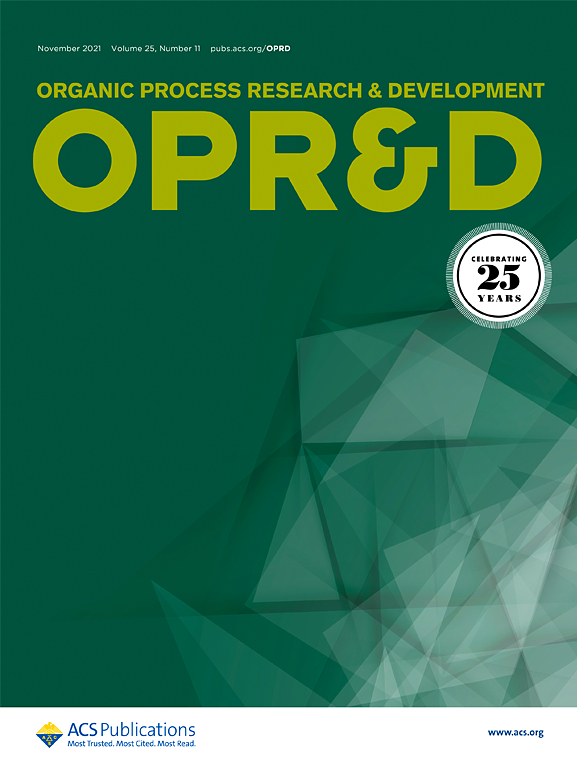Development of a Manufacturing Process for S-892216 Part I: A Novel Method for Constructing a Multi-Substituted Barbiturate Skeleton for Scalable Synthesis
IF 3.5
3区 化学
Q2 CHEMISTRY, APPLIED
引用次数: 0
Abstract
S-892216, a second-generation 3CL protease inhibitor, is currently being developed as a clinical drug candidate for the treatment of SARS-CoV-2 infection. This paper outlines the development process and scaling-up of S-892216 for early-phase clinical trials. The developed synthetic route involved a condensation reaction between carboxylic acids and urea with T3P, followed by cyclization in the presence of CDI and DBU to construct a barbiturate core. This novel method facilitated the efficient production of high-quality S-892216 in six steps, with an overall yield of 41.3% from readily available starting materials.

S-892216制备工艺的发展第一部分:构建多取代巴比妥酸盐骨架的新方法
S-892216是第二代3CL蛋白酶抑制剂,目前正在作为治疗SARS-CoV-2感染的临床候选药物进行开发。本文概述了S-892216早期临床试验的开发过程和扩大规模。所建立的合成路线包括羧酸和尿素与T3P的缩合反应,然后在CDI和DBU存在下环化以构建巴比妥酸酯核心。该方法通过六个步骤高效地制备了高质量的S-892216,总收率为41.3%。
本文章由计算机程序翻译,如有差异,请以英文原文为准。
求助全文
约1分钟内获得全文
求助全文
来源期刊
CiteScore
6.90
自引率
14.70%
发文量
251
审稿时长
2 months
期刊介绍:
The journal Organic Process Research & Development serves as a communication tool between industrial chemists and chemists working in universities and research institutes. As such, it reports original work from the broad field of industrial process chemistry but also presents academic results that are relevant, or potentially relevant, to industrial applications. Process chemistry is the science that enables the safe, environmentally benign and ultimately economical manufacturing of organic compounds that are required in larger amounts to help address the needs of society. Consequently, the Journal encompasses every aspect of organic chemistry, including all aspects of catalysis, synthetic methodology development and synthetic strategy exploration, but also includes aspects from analytical and solid-state chemistry and chemical engineering, such as work-up tools,process safety, or flow-chemistry. The goal of development and optimization of chemical reactions and processes is their transfer to a larger scale; original work describing such studies and the actual implementation on scale is highly relevant to the journal. However, studies on new developments from either industry, research institutes or academia that have not yet been demonstrated on scale, but where an industrial utility can be expected and where the study has addressed important prerequisites for a scale-up and has given confidence into the reliability and practicality of the chemistry, also serve the mission of OPR&D as a communication tool between the different contributors to the field.

 求助内容:
求助内容: 应助结果提醒方式:
应助结果提醒方式:


